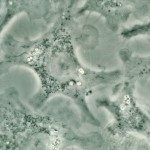Lien vers Pubmed [PMID] – 17555375
Expert Opin Biol Ther 2007 Jun;7(6):907-18
Innate immunity is characterised by a rapid action of host effector molecules and leukocytes aimed at limiting the multiplication of invading microbial organisms and destroying them. The recognition and destruction of microorganisms involves humoral factors (e.g., the complement system and natural antibodies) and different cell types (e.g., phagocytic cells, mast cells, natural killer cells). Microbial detection by cells involves germ line-encoded pattern-recognition receptors such as Toll-like receptors and nucleotide-binding oligomerization domain-like receptors. Cellular activation by pathogens leads to the release of antimicrobial peptides (e.g., defensins and peptidoglycan recognition proteins) and cytokines that orchestrate the anti-infectious response. Cytokines enhance phagocytosis and leukocyte microbicidal activity, allow cellular recruitment into the infectious focus, boost hematopoiesis, induce fever and lead to the production of acute phase proteins.

